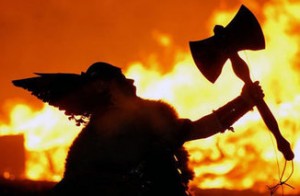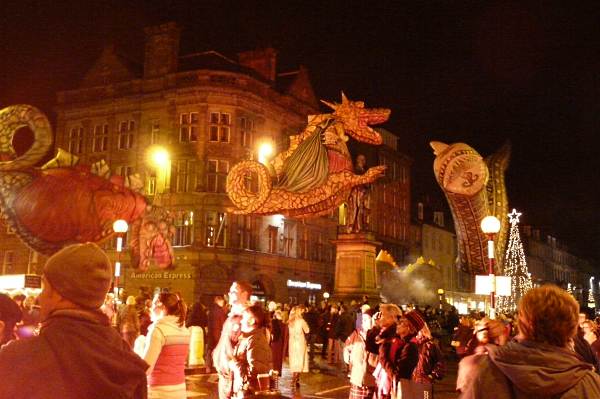Tags
While Americans are popping champagne and watching the ball drop over Times Square, Scots are celebrating the Festival of Hogmanay. This event dates back to the Vikings, but can be traced as far back as the pre-Roman pagan practice of fire and sun worship during the dark months of winter. Later the Roman’s adopted the holiday as ‘Saturnalia’ where the people celebrated without any inhibitions or restraint.The Vikings celebrated a variation of this festival and called it ‘Yule’ which later became the 12 days of Christmas or ‘Daft Days’. The term Hogmanay appeared later, and the name seems to have several possible origins.
There are lots of variations that have evolved locally, most of these involve fire and a lot of drinking. Think Mardi Gras and a pyrotechnics convention put together. That pretty much sums it up. However, some older traditions prevail in rural areas.
I n the Highlands, it is customary to celebrate Hogmanay with the saining ( ‘protecting’ or ‘blessing’) of the household and livestock. Early on New Year’s morning, the family consumes water from ‘a dead and living ford’ ( a river crossing that is routinely used by both the living and the dead) and then annoints the house. After the house and all its occupants (including the livestock) are blessed with water, everything is sealed up tight and juniper branches are set on fire and carried throughout the house and barns. Once the smoke is thick enough to cause sneezing and coughing, all the doors and windows are flung open air out the smoke and everyone sits down to breakfast, which is accompanied by whisky.
n the Highlands, it is customary to celebrate Hogmanay with the saining ( ‘protecting’ or ‘blessing’) of the household and livestock. Early on New Year’s morning, the family consumes water from ‘a dead and living ford’ ( a river crossing that is routinely used by both the living and the dead) and then annoints the house. After the house and all its occupants (including the livestock) are blessed with water, everything is sealed up tight and juniper branches are set on fire and carried throughout the house and barns. Once the smoke is thick enough to cause sneezing and coughing, all the doors and windows are flung open air out the smoke and everyone sits down to breakfast, which is accompanied by whisky.


Почему вы меня обманываете ! Сами пишите а мне даже комментарий нельзя сказать !!! Почему не размещаете мои ответы !
Это http://www.demonologybooks.com не блог ес ли мне ответ даже нельзя написать !
Relax. Your comments get posted. They’re moderated though, so if you’re just commenting with a link to promote your website selling insurance quotes or discount software, you’ll probably get deleted. After all, this is a blog, not a links page…
But that’s really the only censorship happening. I’m all about free speech, not providing a forum for free advertising.
Peace,
Gabriel
Good blogging!